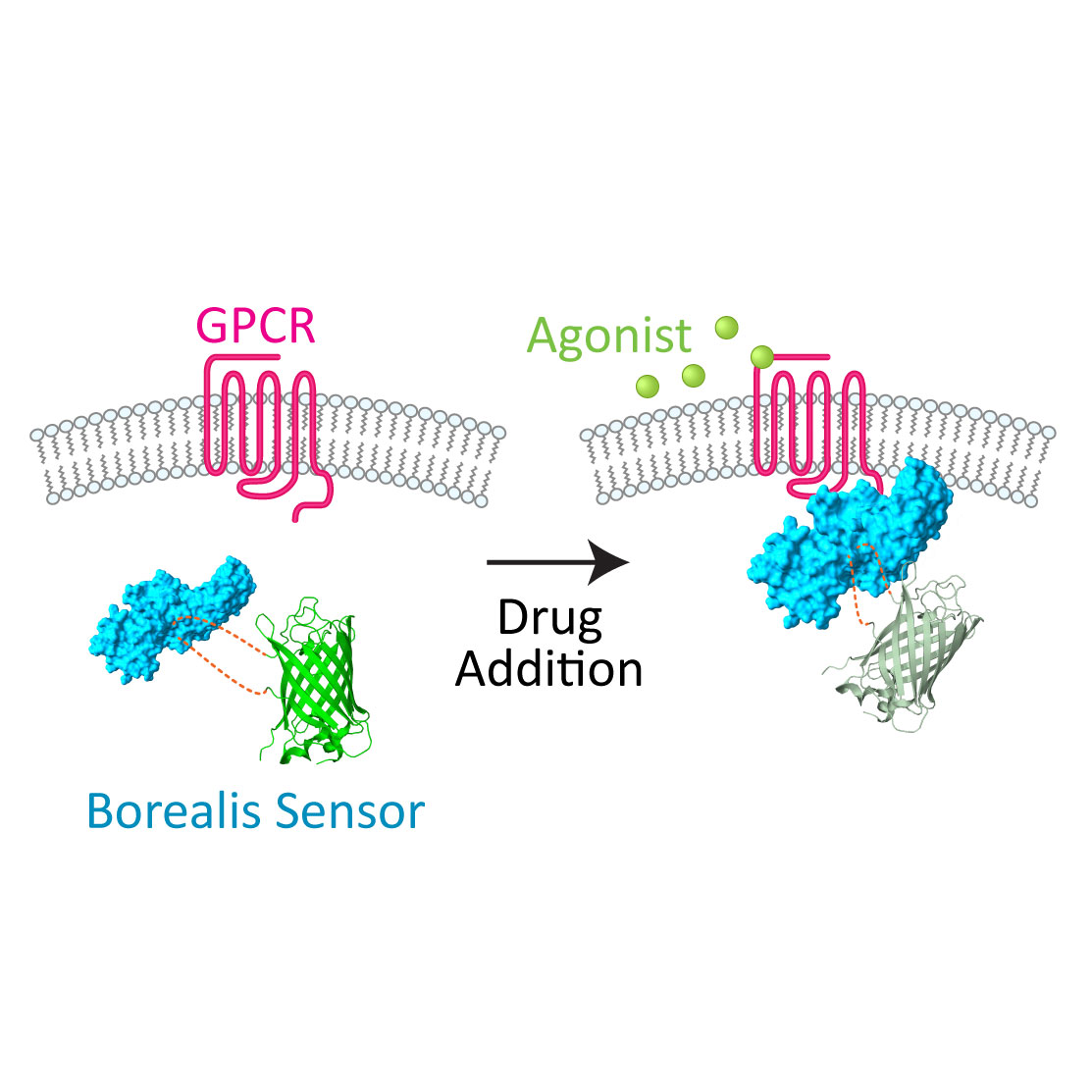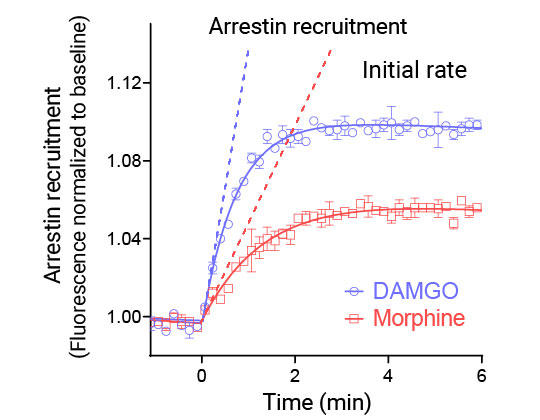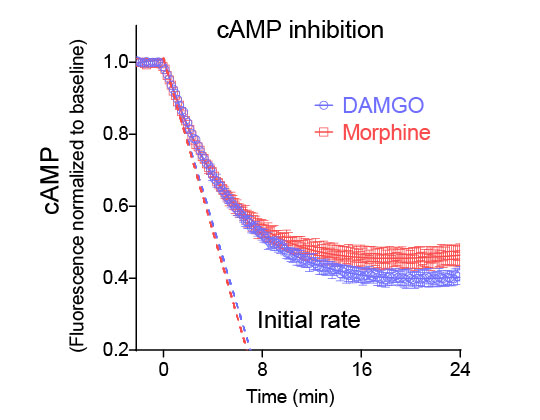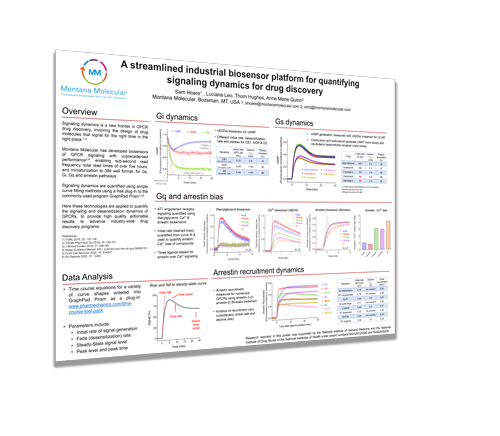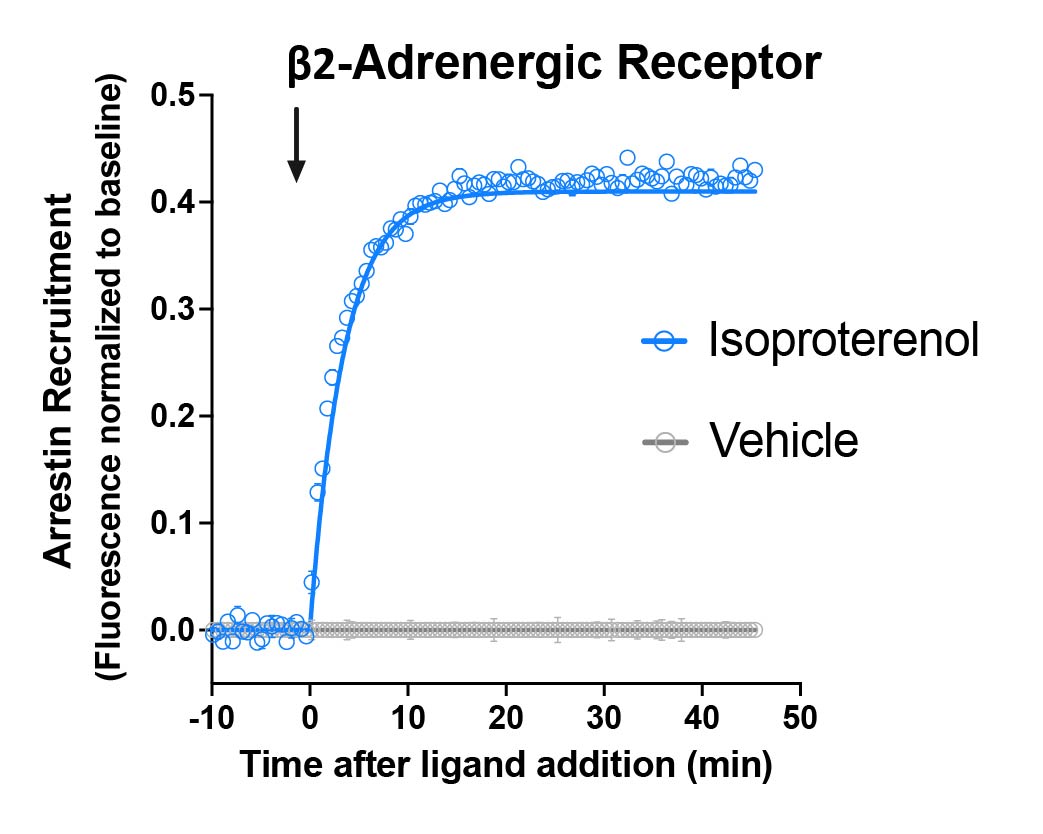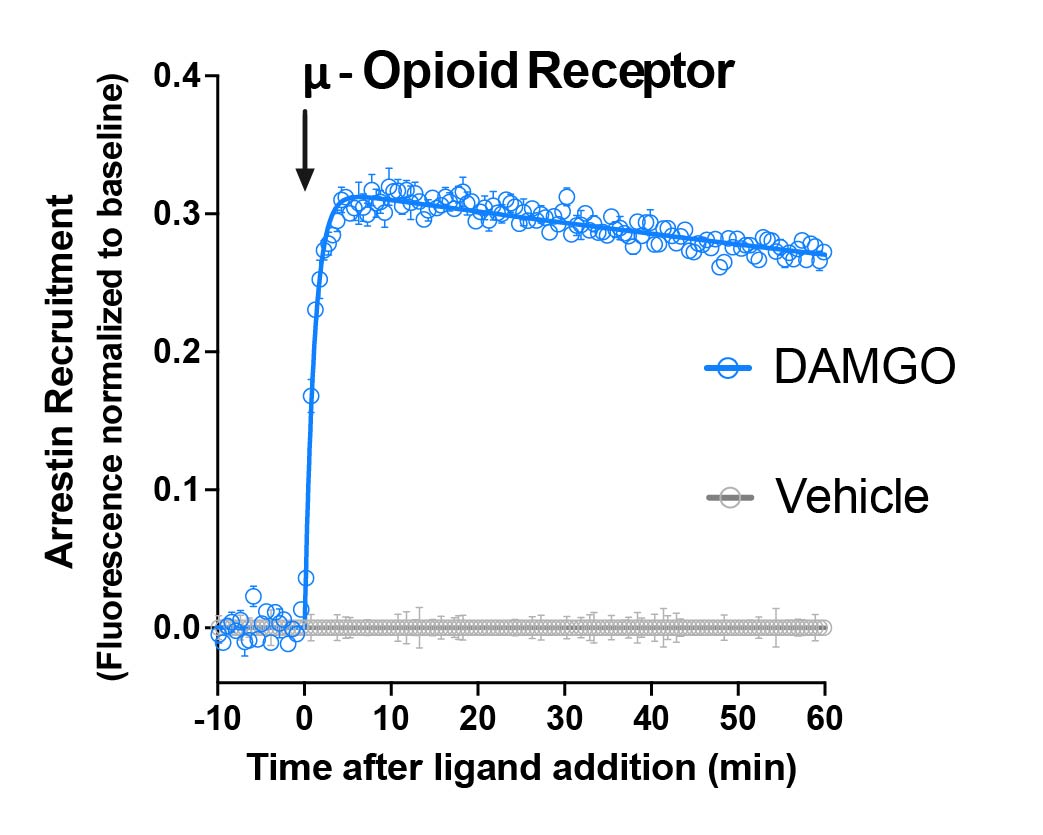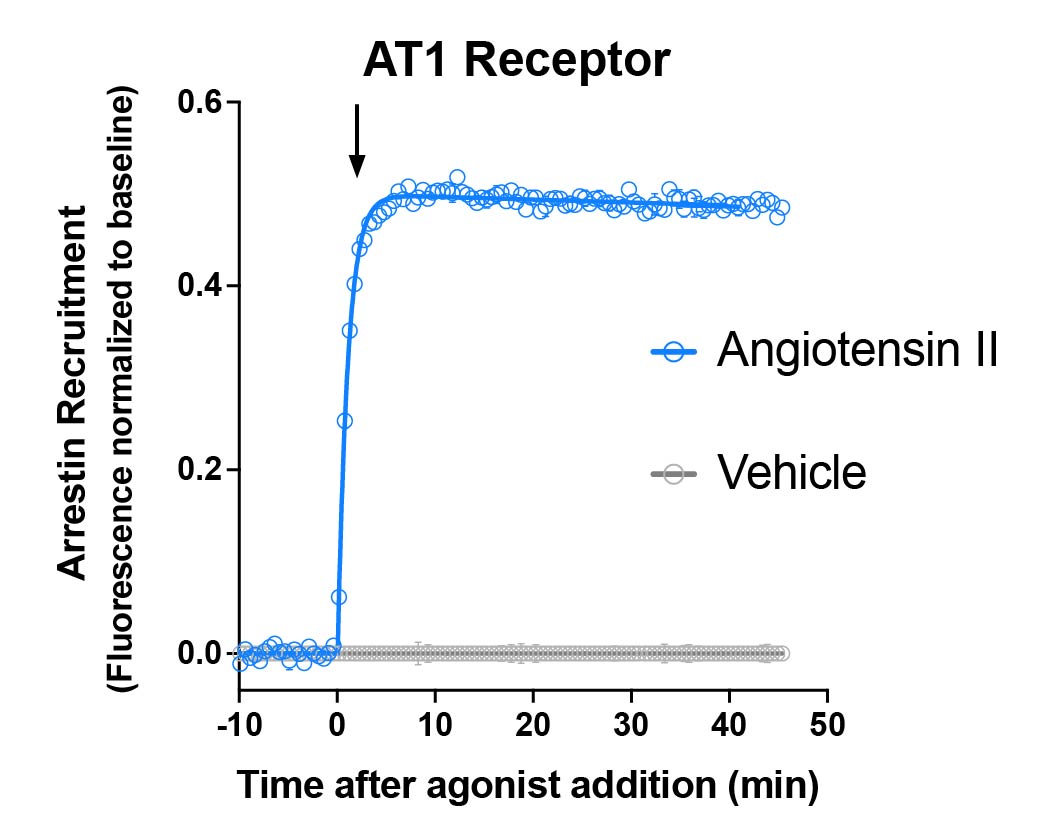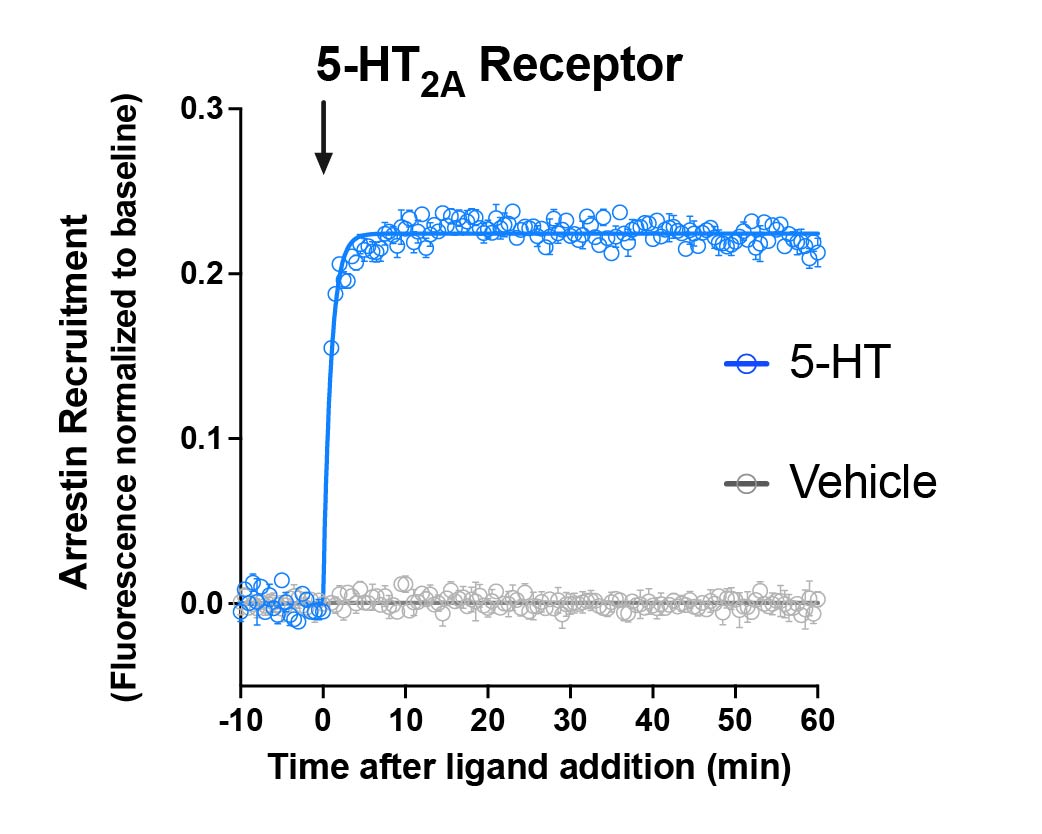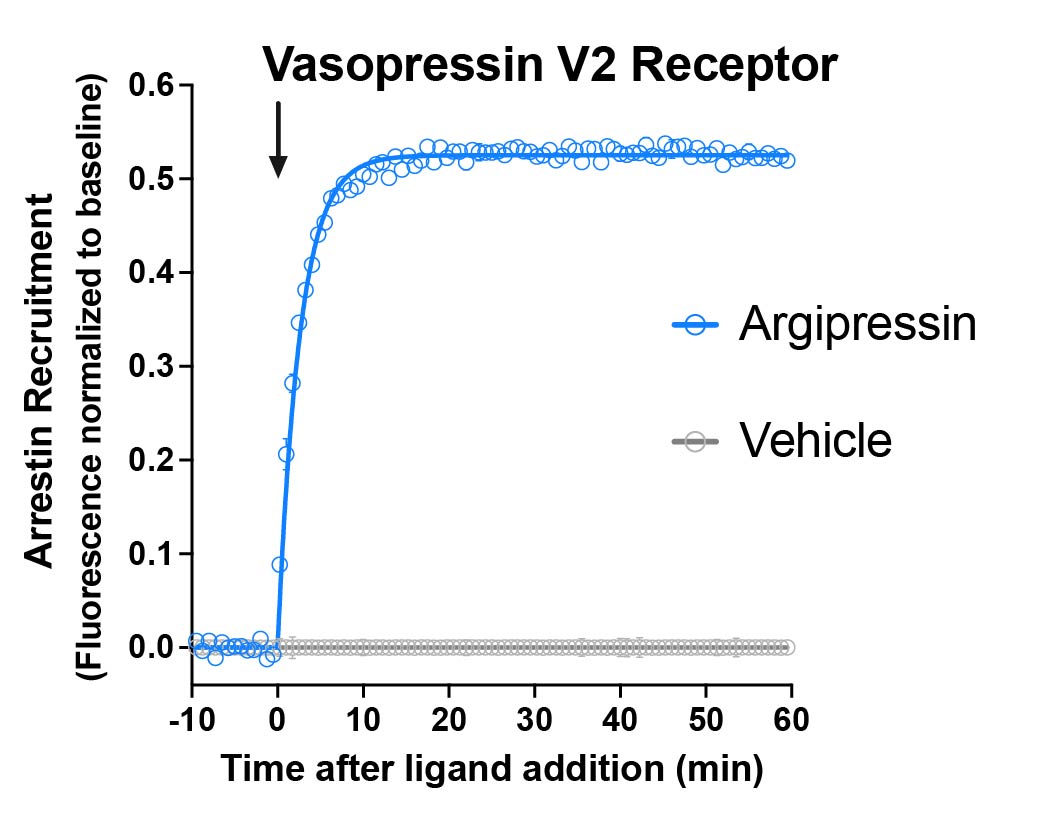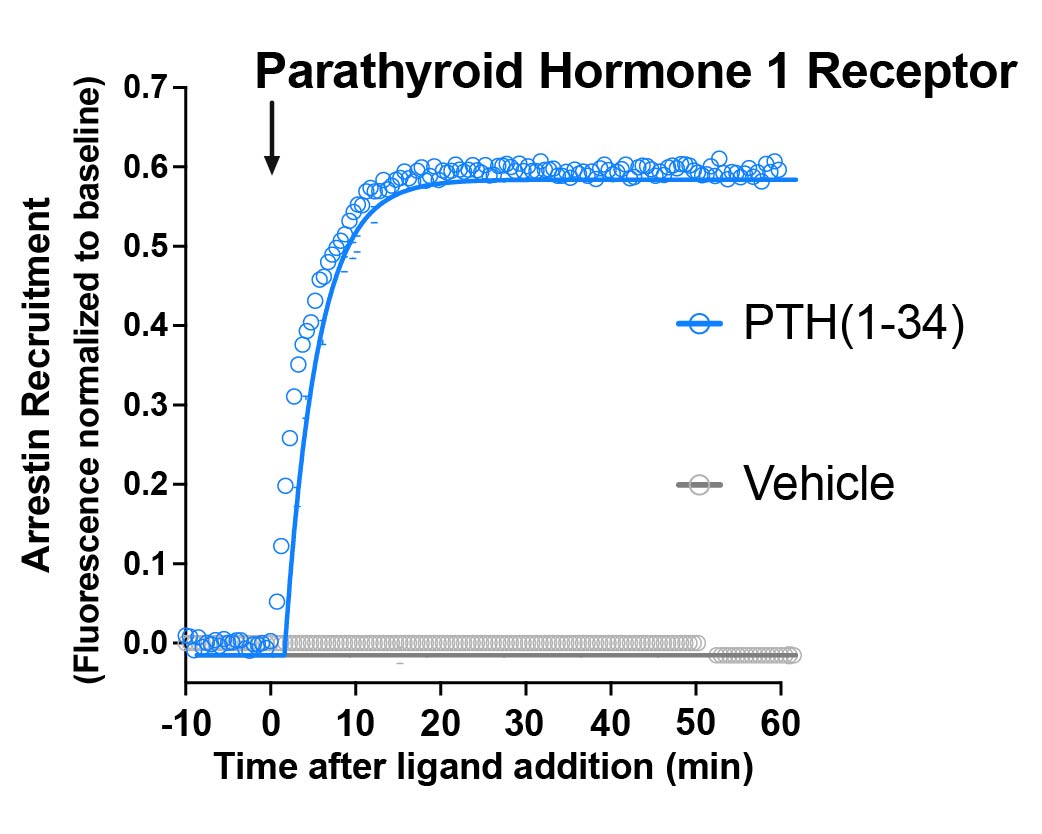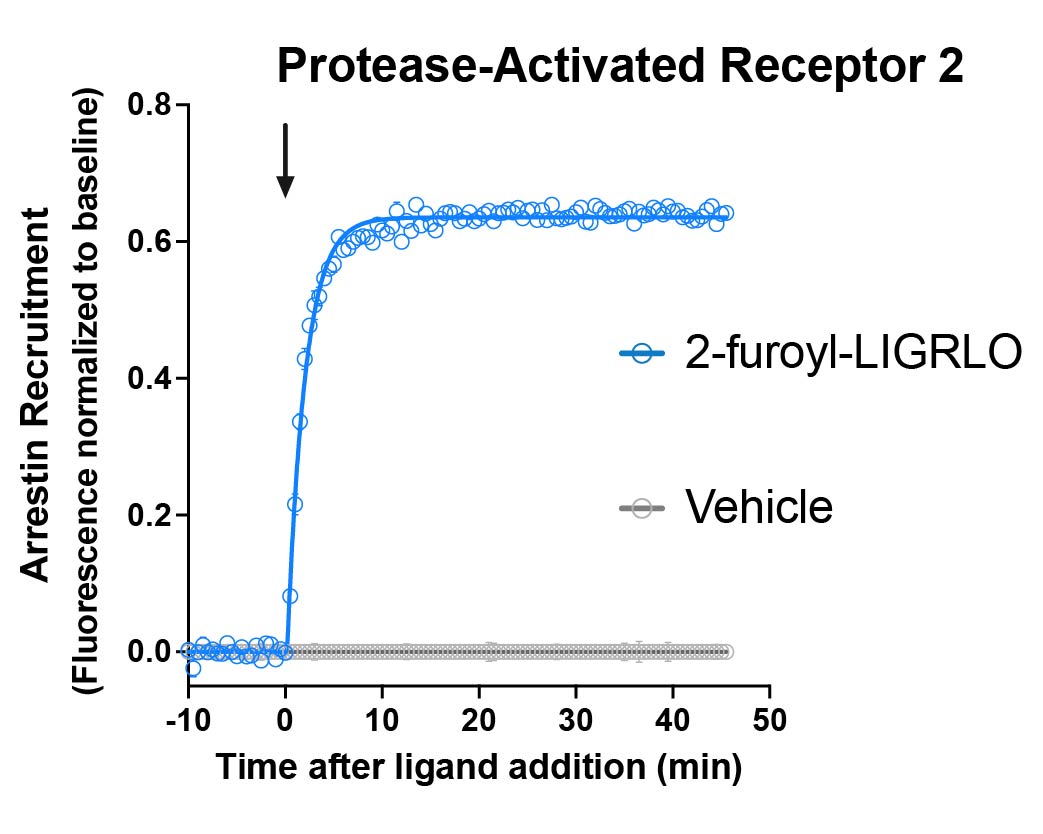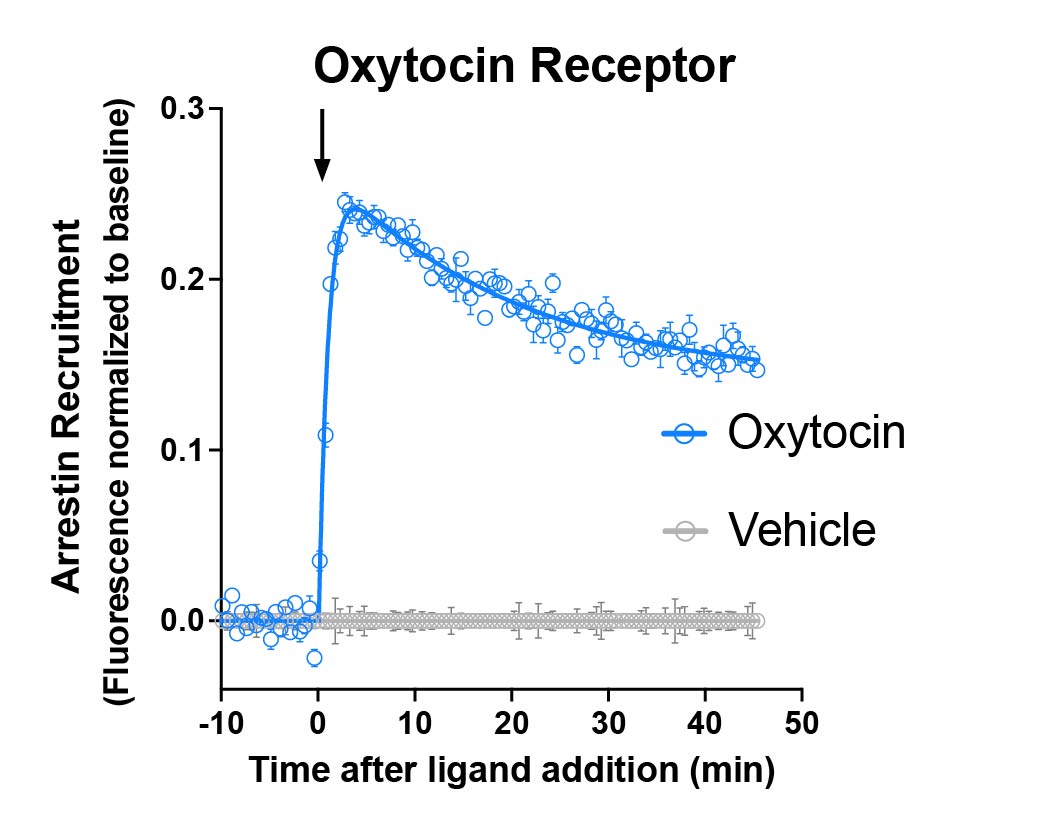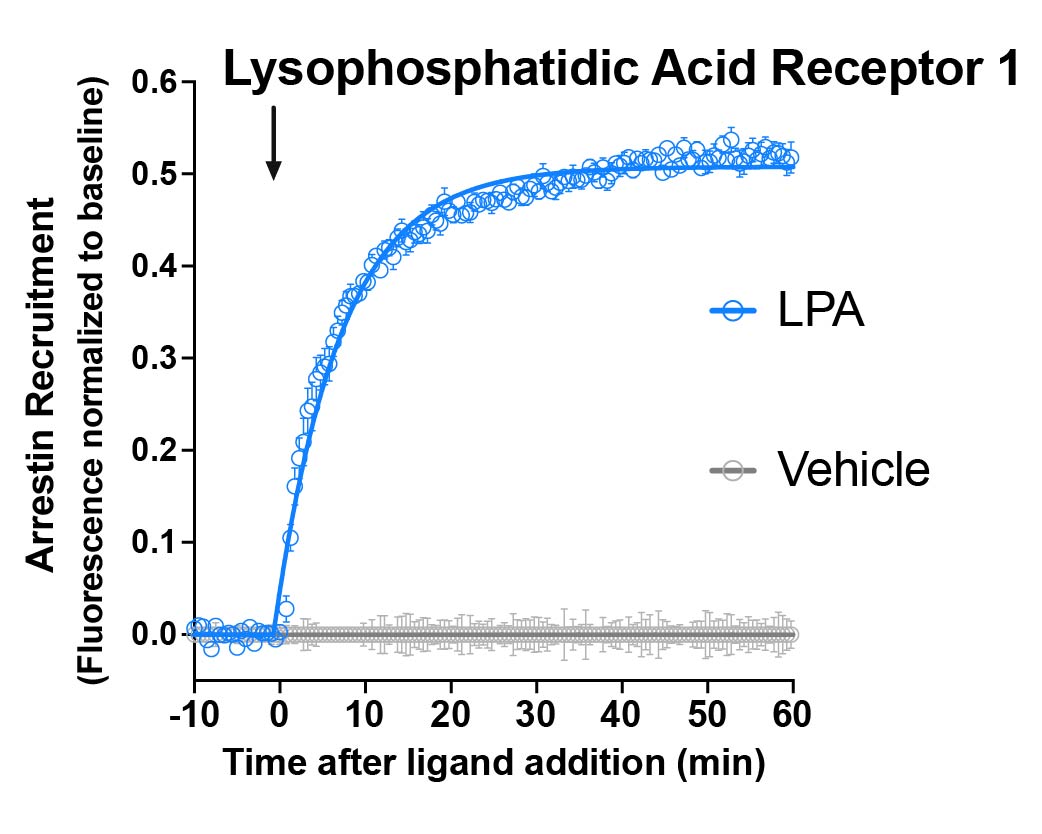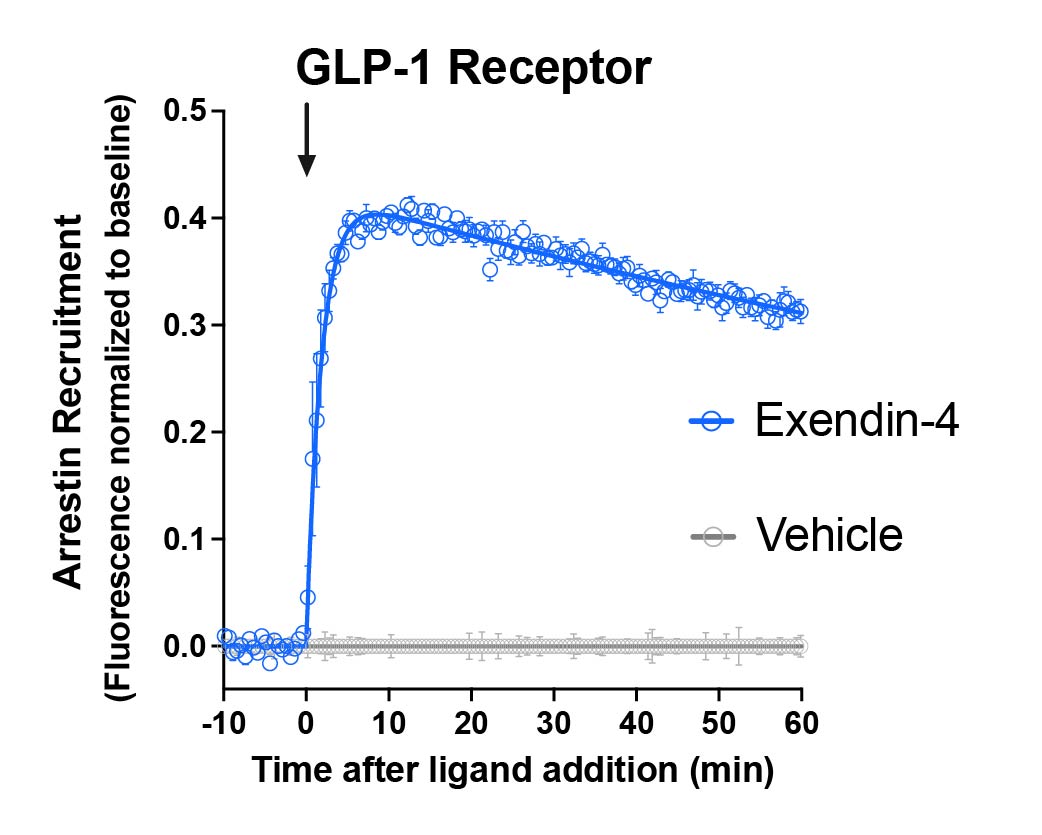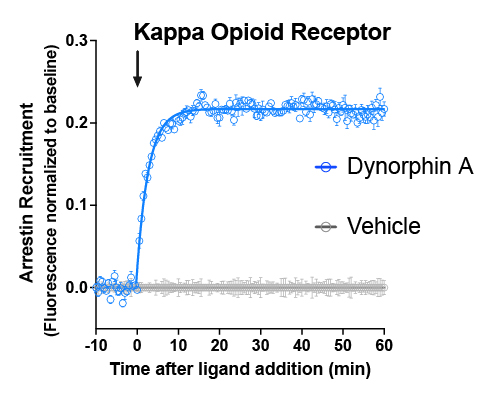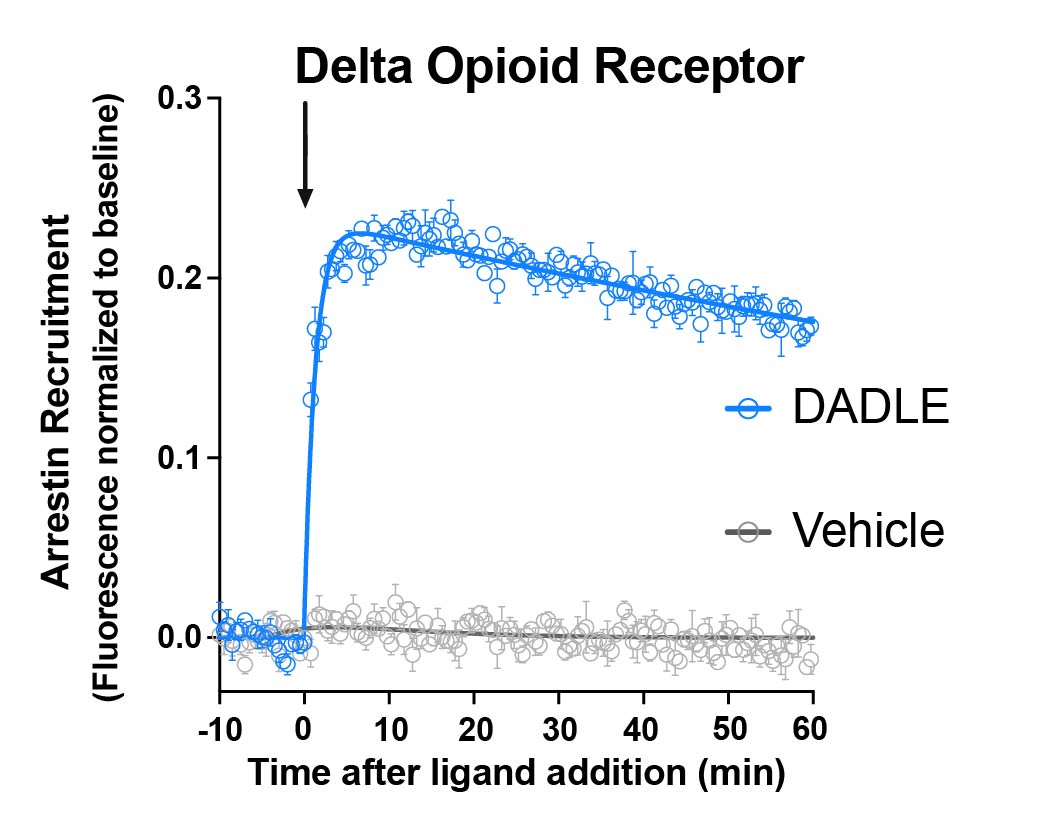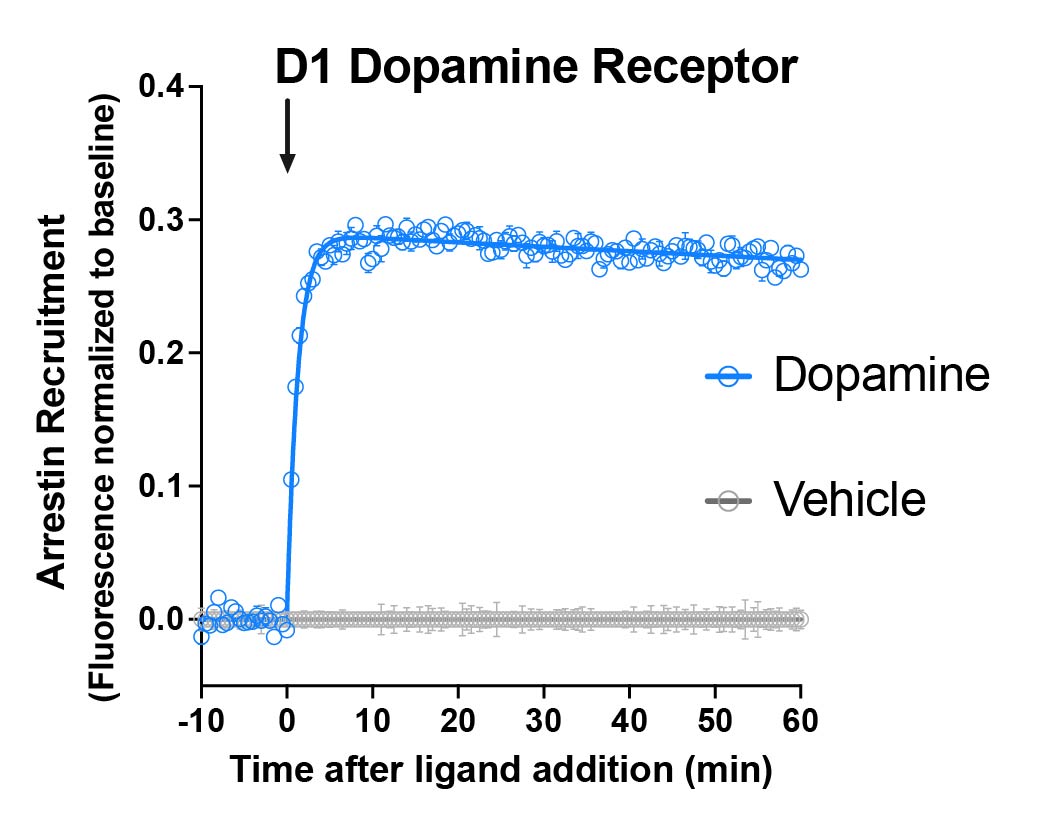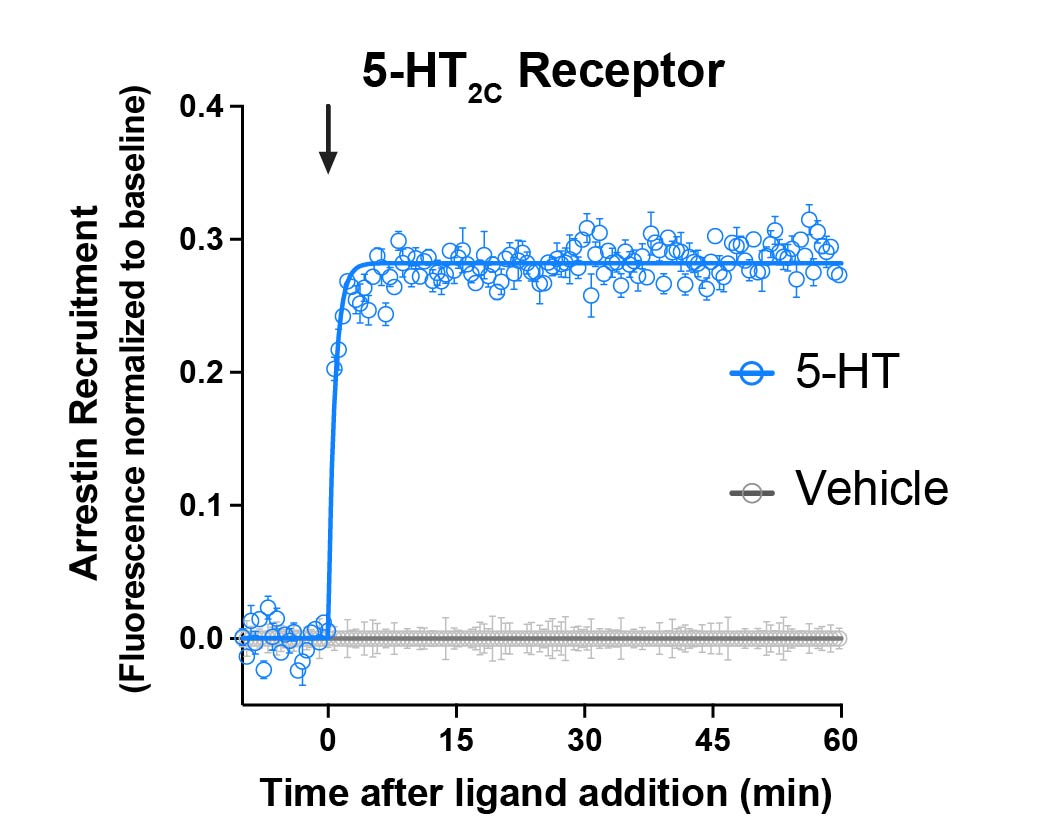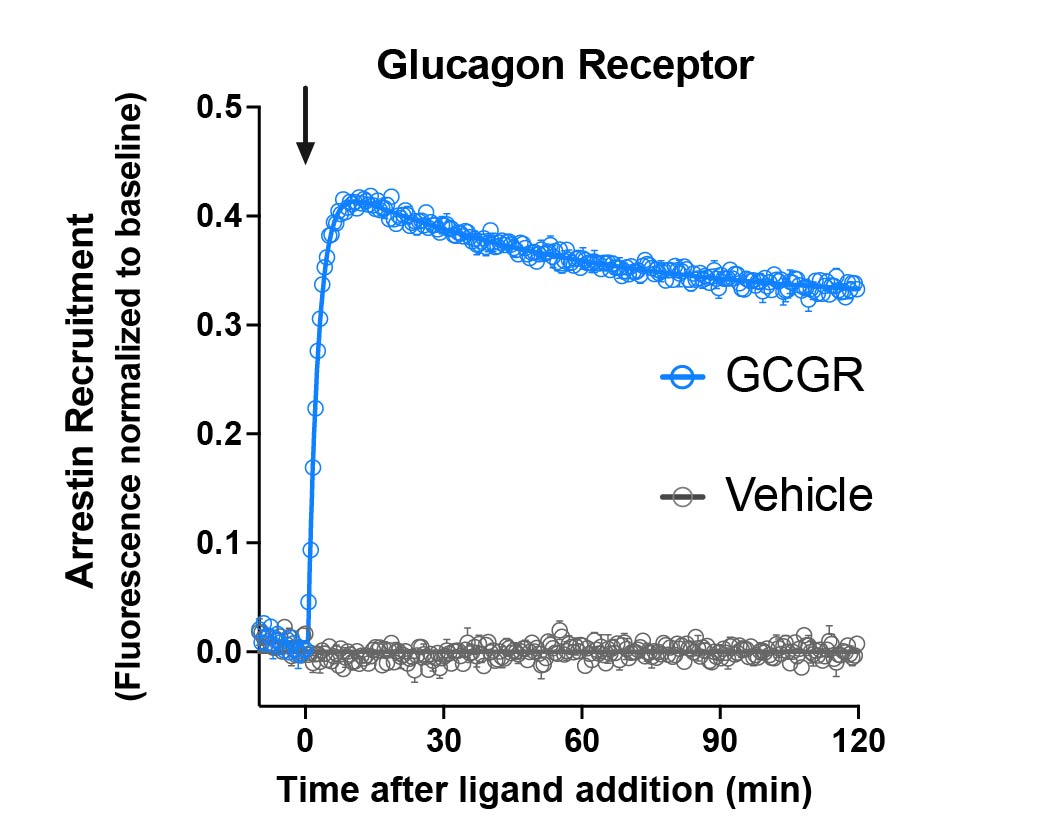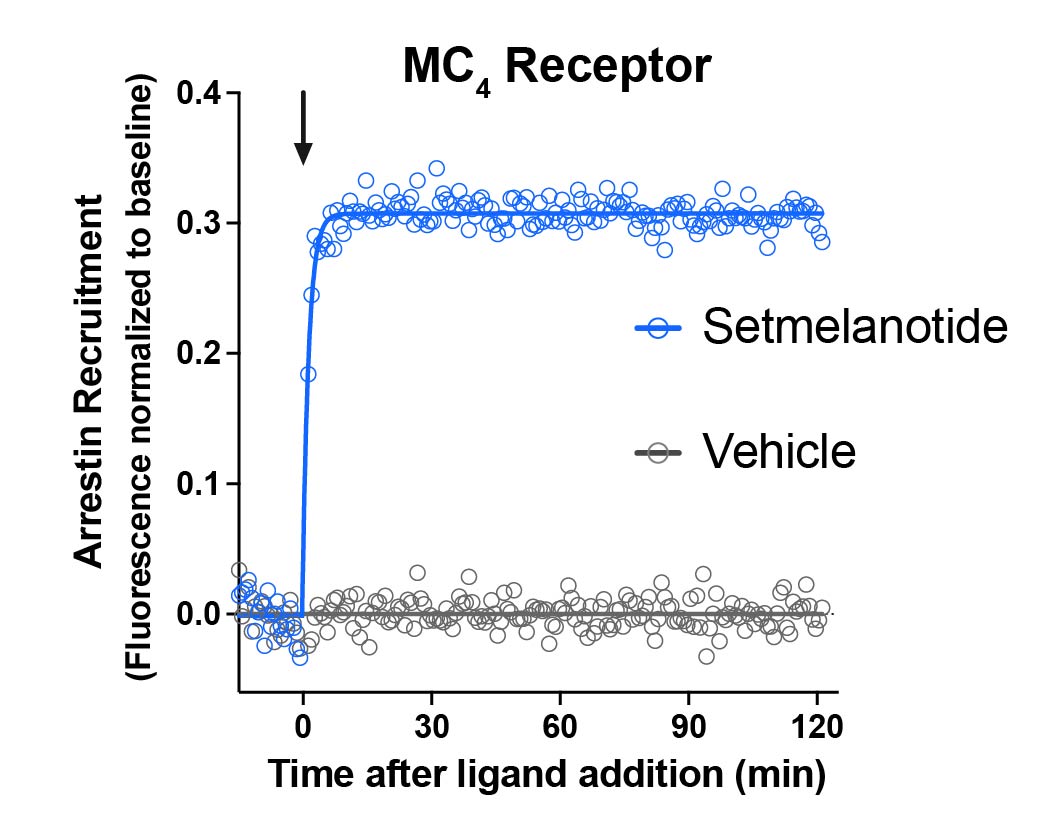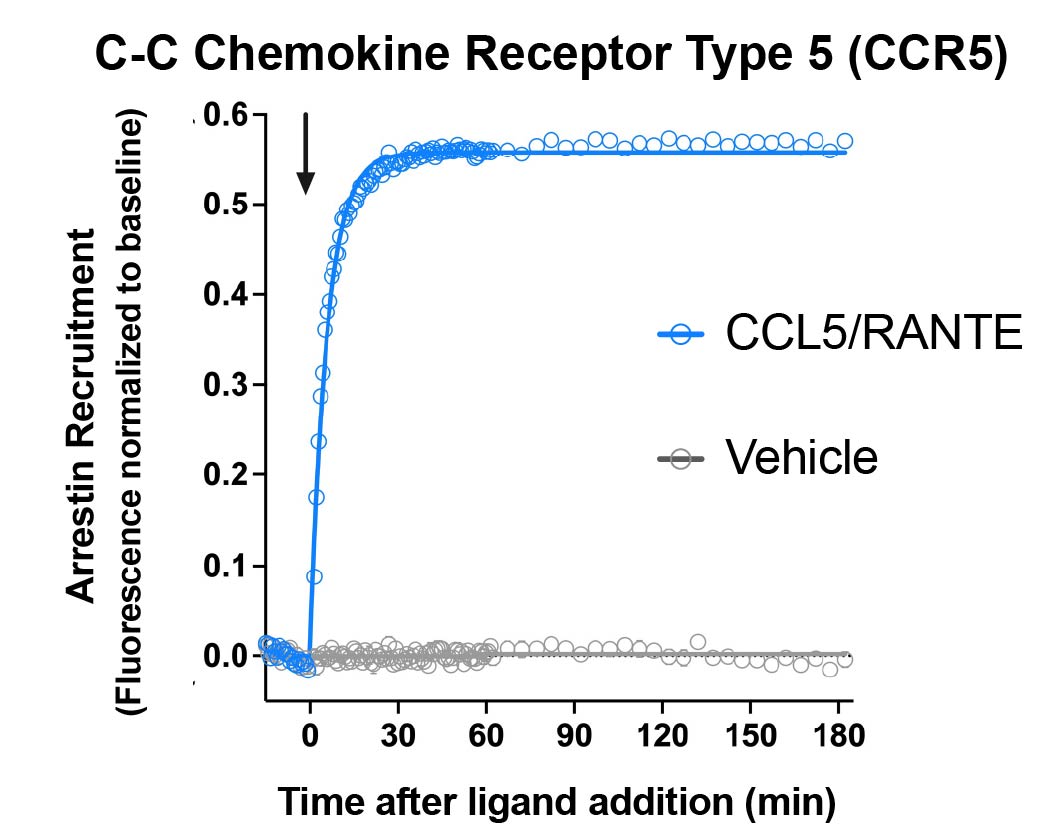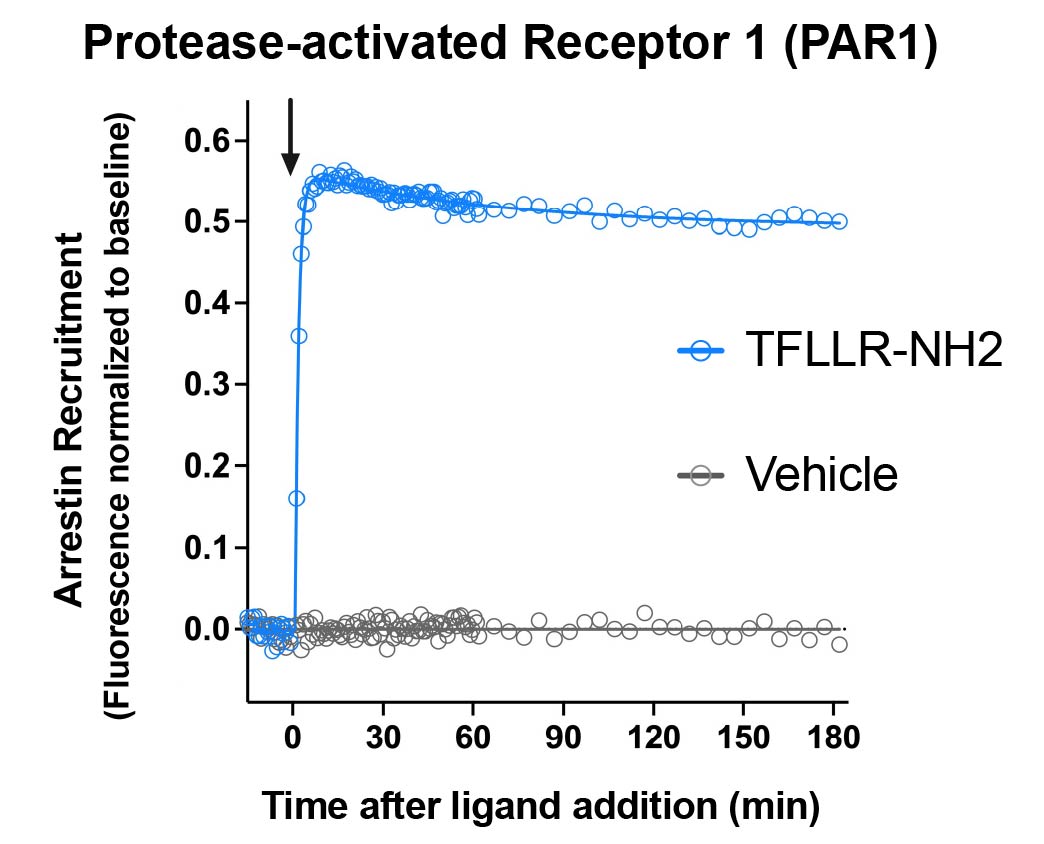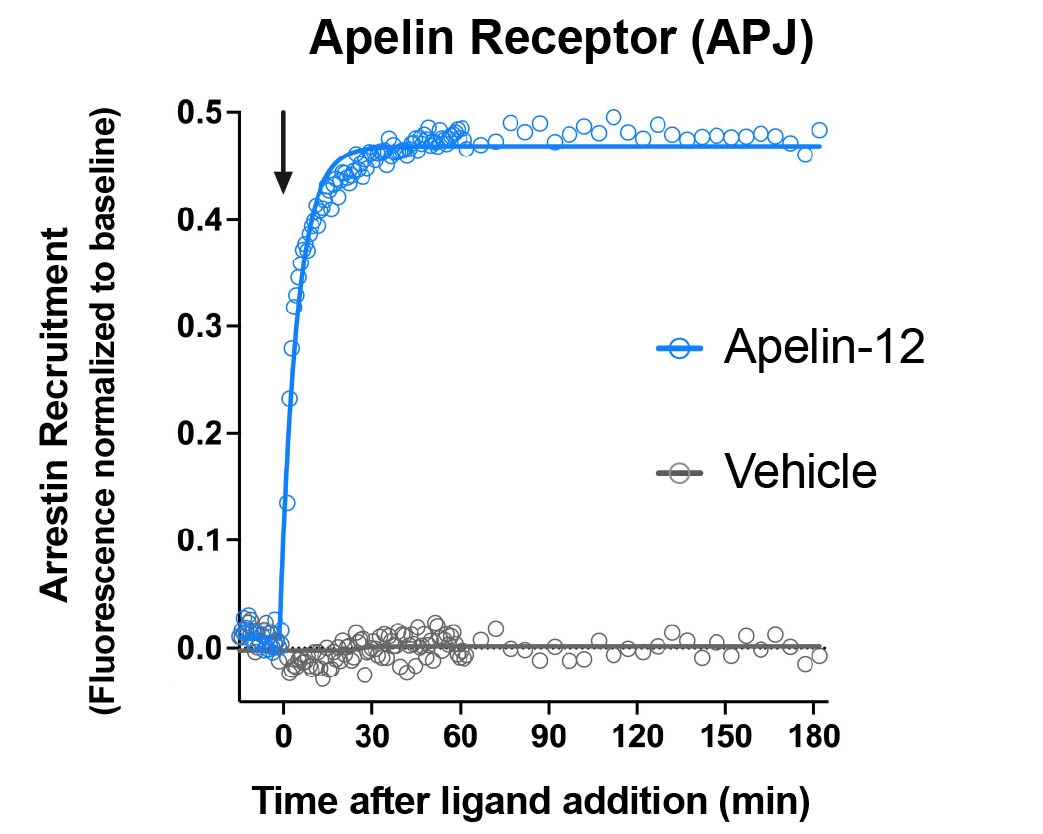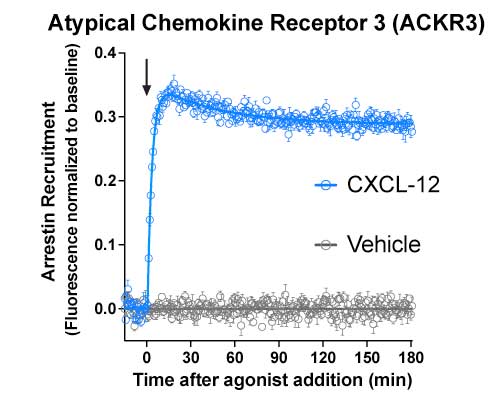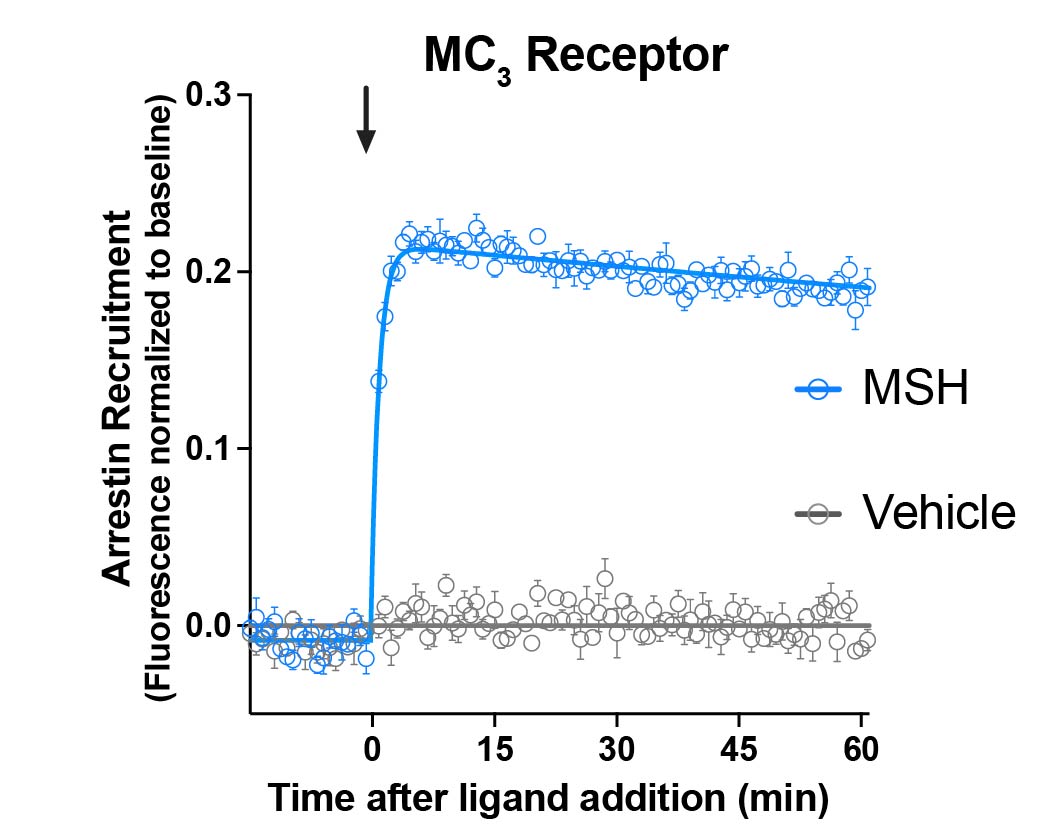Borealis Arrestin Biosensors
Signaling dynamics is a new frontier in drug discovery, involving the design of drug molecules that signal for the right time in the right place. Biosensors, like the Borealis Arrestin Sensor, have been the foundation of the latest discoveries, enabling signaling dynamics to be recorded continuously over time in live cells.
Borealis, your best-in-class fluorescent biosensor for arrestin recruitment:
- Use unmodified GPCRs.
- Measure kinetic cellular responses.
- Monitor arrestin and G-limb signaling using the same modality.
- Quantify efficacy. Prioritize leads.
- Reliably detect agonist bias in living cells.
Download easy to use modules in GraphPad Prism to convert Borealis time course data into actionable parameters that drive lead discovery.
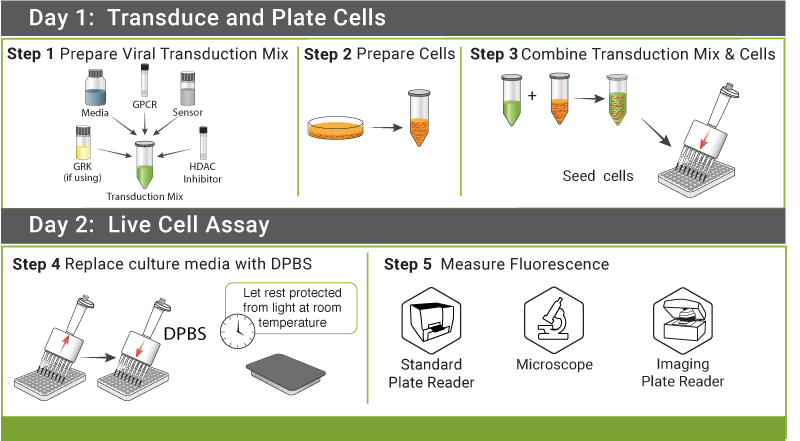
A common assay modality enables reliable measurements of Arrestin and G-protein mediated signaling.
Arrestin and cAMP signaling activity at the MOR measured in parallel plates. Assays used: Borealis-MOR Arrestin assay and cADDis cAMP Assay
Analyze kinetic data with intuitive Pharmechanics Tools
- Use the Time Course Tool Pack which provides GraphPad Prism plugins for kinetic data analysis
- Make direct comparisons of arrestin and G-limb activity
- Monitor the time course of GPCR activity in a single assay
- Estimate efficacy, potency and desensitization rate
- Quantify partial and biased agonism
Featured Poster: A streamlined industrial biosensor platform for quantifying signaling dynamics for drug discovery
A streamlined industrial biosensor platform for quantifying signaling dynamics for drug discovery
Signaling dynamics is a new frontier in GPCR drug discovery, involving the design of drug molecules that signal for the right time in the right place. Montana Molecular has developed biosensors of GPCR signaling with unprecedented performance, enabling sub-second read frequency, total read times of over five hours, and miniaturization to 384-well format, for Gs, Gi, Gq and arrestin pathways.
Recent Arrestin Assay Publications
- A. Ippolito, et al. Evidence that 5-HT2A receptor signalling efficacy and not biased agonism differentiates serotonergic psychedelic from non-psychedelic drugs. British Journal of Pharmacology. June 2025.
- E. Billard, et al. Pharmacological characterization of cannabidiol as a negative allosteric modulator of the 5-HT2A receptor. Cellular Signaling. January 2025.
- I. Davies, et al. Chronic GIPR agonism results in pancreatic islet GIPR functional desensitisation. Molecular Metabolism. January 2025.
- A. Ippolito, et al. Increased 5-HT2A receptor signalling efficacy differentiates serotonergic psychedelics from non-psychedelics. bioRxiv. June 2024.
- H. Schiff, et al. β-arrestin-biased proteinase-activated receptor-2 antagonist C781 limits allergen-induced airway hyperresponsiveness and inflammation. British Journal of Pharmacology. June 2022.
- S. Hoare, et al. Quantifying the Kinetics of Signaling and Arrestin Recruitment by Nervous System G-Protein Coupled Receptors. Frontiers in Cellular Neuroscience. January 2022.
- S. Hoare, T. Hughes. Biosensor Assays for Measuring the Kinetics of G-Protein and Arrestin-Mediated Signaling in Live Cells. The Assay Guidance Manual. September 2021.
- S. Hoare, et al. Analyzing kinetic signaling data for G-protein-coupled receptors. Nature Scientific Reports. July 2020.
- S. Hoare, et al. A kinetic method for measuring agonist efficacy and ligand bias using high resolution biosensors and a kinetic data analysis framework. Nature Scientific Reports. Feb 2020.
Available Arrestin Assay Kits
Click the figure to purchase the Borealis Arrestin Kit of your choice
* Fluorescence normalized to baseline
Arrestin Assay FAQs
What Arrestin biosensor kits are available?
We have 21 receptor-optimized kits available off-the-shelf. Receptor-specific kits for AT1R, V2R, GLP-1R, MOP, β2AR, D1R, OTR, 5-HT2AR, KOR, PAR2, DOR, LPA1R, PTH1R, 5-HT2CR, GCGR, MC3R, MC4R, CCR5, ACKR3, and PAR1 are shipping now.
Don’t see what you need? Please let us know info@montanamolecular.com.
What if my receptor of interest is not available?
New receptor-specific kits will be released on a regular basis, and we do offer assay services including compound profiling and assay optimization with the Borealis Arrestin assay. These services are not limited to the receptors listed in our off-the-shelf kits. Please contact us with questions about our services, or to let us know which receptor you would be interested in investigating with these tools.
Can I use a plate reader with the Arrestin biosensor assay?
Receptors included in kits D2000G-D2140G produce robust Z’ values on standard fluorescence plate readers in HEK293T cells when used with the Borealis arrestin assay. Other cell types and receptors may require imaging to capture signals from individual cells.
Can I detect a response in primary cultures or iPSCs?
We haven’t tried iPSCs or primary cultures for the arrestin biosensors yet, but if you are interested, we can help. BacMam transduces many primary cultures, iPSCs, and cell lines well, for example publications using other biosensors in these cell types click here.
What if I have an endogenously-expressed or cell line expressing my receptor of interest?
The response will depend on a number of factors including the receptor being used, the level of receptor expression, and the profile of GRK expression. For receptors we know respond well with our Borealis arrestin sensor (FAQ 1), we recommend using the relevant receptor-specific kit so you have the GPCR and GRK, if needed, in BacMam for optimization.
For receptors that have not been optimized yet, please email us at info@montanamolecular.com with questions about optimization or to let us know which receptors we should test.
How do I analyze kinetic data?
Our signaling kinetics introductory video is a great starting resource.
Pharmechanics has also developed a Time Course Tool Pack which provides GraphPad Prism plugins for analyzing kinetic data. Our chapter in The Assay Guidance Manual from NIH – Biosensor Assays for Measuring the Kinetics of G-Protein and Arrestin-Mediated Signaling in Live Cells – has additional useful information.
Can I multiplex the green arrestin biosensor with a red sensor for cAMP, DAG, or Calcium?
Yes you can. We recommend confirming the positive controls in separate experiments before multiplexing the assay.
GPCR Biology
Increase your understanding of drug effects and GPCR biology with bright fluorescent assays for Gs, Gi, and Gq signaling and arrestin recruitment in living cells.

